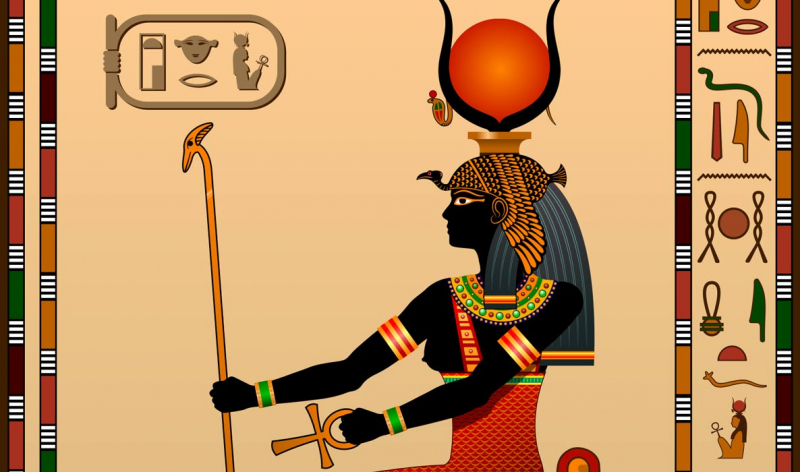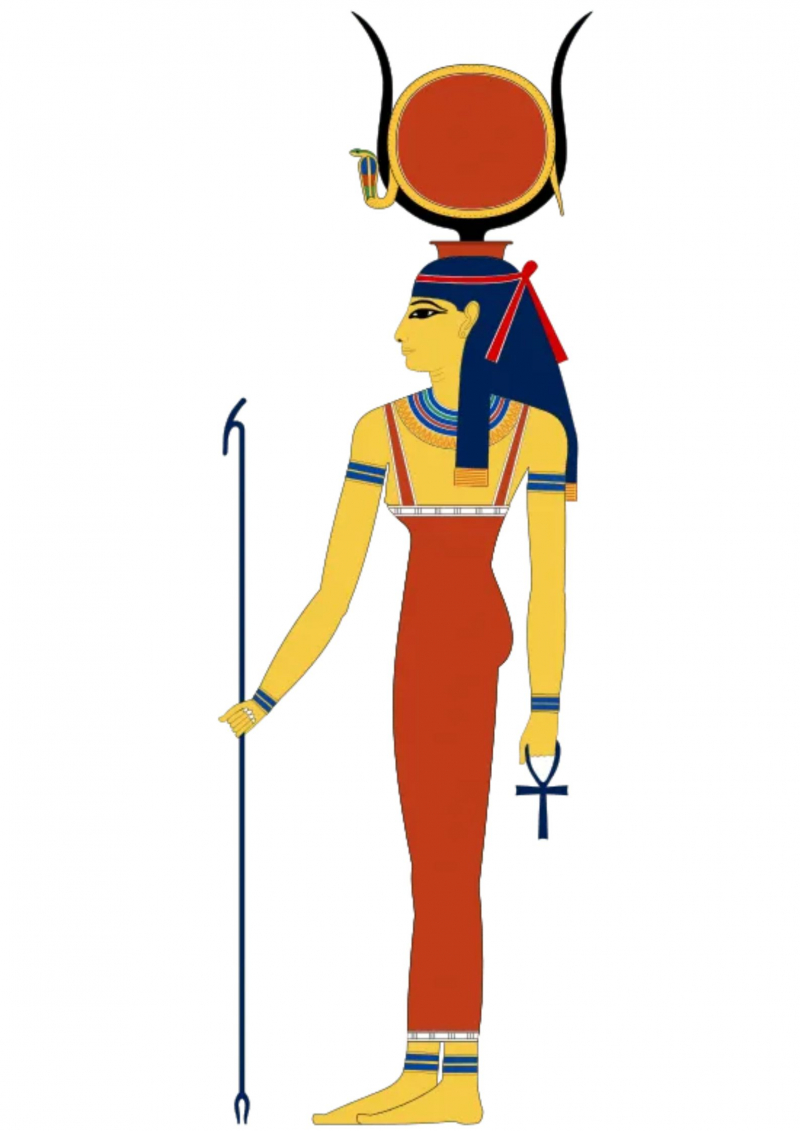Hathor - Goddess of Motherhood
Hathor is called the Egyptian Mother Goddess or Goddess of Love. From the Old Kingdom (about 2700 BC) or earlier to the end of Egyptian history, she was worshiped (circa AD 400). She was one of the most potent and well-known of Egypt's 42 state deities.
Hathor is said to have a kind disposition and be empowered by creative powers. She allegedly repaired what Sekhmet had ruined. As a result, she was always portrayed as a cow deity in one or more forms. She was referred to as "Lady of the Stars" for her heavenly abilities. She is frequently referred to as the mother of all Egyptian pharaohs and her father is the sun deity Ra.
She may be portrayed as a cow in works of art, as in the sculpture of her munching on papyrus leaves and nursing Amenhotep II from the Hathor shrine of Tuthmosis III, or in human form with hairstyles that resemble the Mesopotamian omega symbol. She is occasionally associated with lions and is also seen in the capitals of architectural columns. The snake and the papyrus reed are other emblems. She was immensely well-liked in Greco-Roman society, and many aspects of Aphrodite were modeled after her.
Hathor, also known as the Mistress of the West, ushered the dead into the afterlife. She represented maternity and female love because she was born of Ra. She was prayed to by the ancient Egyptians as the goddess of dancing and music. She is regarded as a blessing since she assists pregnant and laboring women. She was also known as the Lady of Heaven, Earth, and the Underworld and was affectionate, modest, and kind to both the dead and the living.












